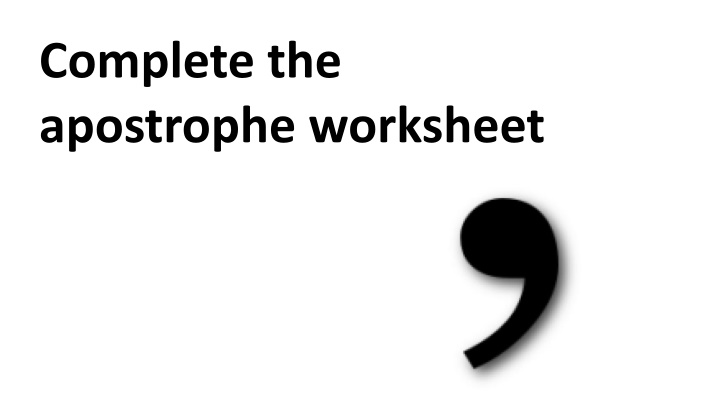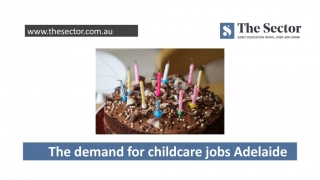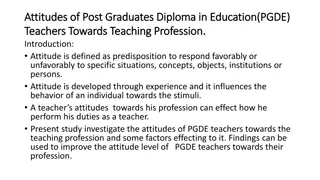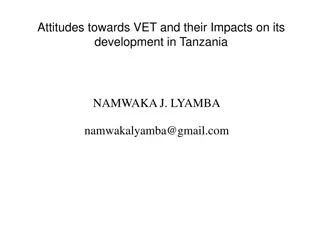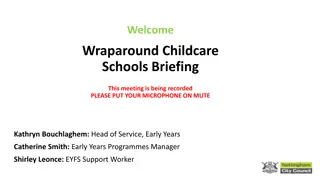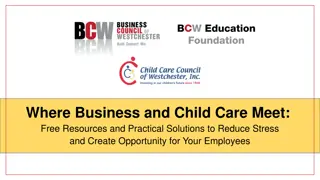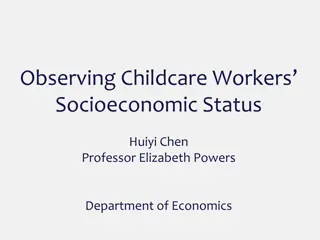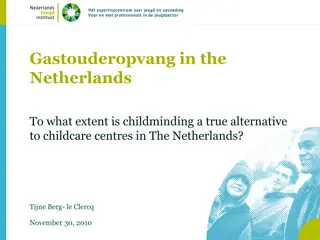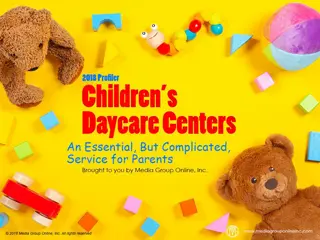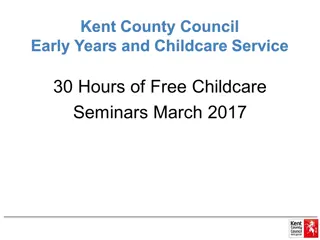Analyzing Attitudes towards Childcare in Source A and B
Explore and compare the different attitudes and methods used by two writers in conveying their perspectives on childcare, supported by relevant quotations. Question 4 prompts an in-depth analysis of language, tone, structure, and sentence types employed to convey attitudes. It builds upon the skills demonstrated in Questions 2 and 3, emphasizing the comparison of viewpoints and methods within the texts.
Download Presentation

Please find below an Image/Link to download the presentation.
The content on the website is provided AS IS for your information and personal use only. It may not be sold, licensed, or shared on other websites without obtaining consent from the author.If you encounter any issues during the download, it is possible that the publisher has removed the file from their server.
You are allowed to download the files provided on this website for personal or commercial use, subject to the condition that they are used lawfully. All files are the property of their respective owners.
The content on the website is provided AS IS for your information and personal use only. It may not be sold, licensed, or shared on other websites without obtaining consent from the author.
E N D
Presentation Transcript
Complete the apostrophe worksheet
Thursday 8th February 2018 C/L Understanding Q4: Comparing the methods of the writers
4. For this question you need to refer to the whole of source A together with the whole of source B. Compare how the two writers convey their different attitudes to looking after other people s children. In your answer you should: compare their different attitudes compare the methods they use to convey their attitudes support your ideas with quotations from both texts. (16 Marks)
4. For this question you need to refer to the whole of source A together with the whole of source B. Compare how the two writers convey their different attitudes to looking after other people s children. In your answer you should: compare their different attitudes compare the methods they use to convey their attitudes support your ideas with quotations from both texts. (16 Marks)
4. For this question you need to refer to the whole of source A together with the whole of source B. Compare how the two writers convey their different attitudes to looking after other people s children. In your answer you should: compare their different attitudes compare the methods they use to convey their attitudes support your ideas with quotations from both texts. (16 Marks)
4. For this question you need to refer to the whole of source A together with the whole of source B. Compare how the two writers convey their different attitudes to looking after other people s children. In your answer you should: compare their different attitudes compare the methods they use to convey their attitudes support your ideas with quotations from both texts. Question 4: Tips and Tricks: Spend 15 minutes on it. Compare means SIMILARITIES and DIFFERENCES you can find both. Compare the attitudes- are they different? Are they the same? Be clear on how the writer s words show their attitude.
Question 4 is designed to bring together the skills demonstrated in Qustion 2 and 3. Question 2 = comparing what the different points of view are. WHAT Question 3 = Looking at how one text uses methods to convey their viewpoint. HOW Question 4 =WHAT the attitudes are and HOW they are conveyed through: Language Tone Structure Sentence types interrogative, exclamatory
Number of marks 13-16 marks Level 4 What s written Wow it s written A detailed, insightful comparison of the writers attitudes, which demonstrates a perceptive understanding of the differences between the two viewpoints. Points are consistently supported by precise quotations from both texts. In-depth analysis of the methods each writer uses to convey their point of view. The writers attitudes are clearly compared, showing a clear understanding of the differences between the two viewpoints. Answer includes relevant discussion of the methods used to convey both writers ideas. A good range of appropriate quotations are used to support points. 9-12 marks Level 3 Some attempt to compare writers attitudes, identifying some differences between them Some comment on how writers methods are used. Includes a range of quotations, not always relevant. 5-8 marks Level 2 1-4 Marks Level 1 Simple identification of the two writers ideas and the differences between them, with only a limitedawareness of the different ideas expressed in each text. Makes a few very simple references to methods used. Some basic textual details or references, but many points are unsupported.
A snippet of answers Both writers think that looking after children is hard- Bronte describes her job as a burden which suggests that it s hard. Monica Albelli calls being a nanny tricky and difficult. However, the two writers are different about why they think it s hard. Bronte doesn t like being asked to love somebody else s children and says she cannot do it. Albelli finds it hard not to bond too much with her children. The writers are also different because Albelli likes looking after other people s children, but Bronte doesn t. She says it s riotous. Albelli s friend says You care too much, showing that Albelli does care about her work.
Answer 2 Bronte s letter suggests that she feels limited and confined by her duties involved in looking after other people s children. She refers to her wards as being constantly with her. Bronte s choice of adverb suggests that she gets not respite from the children; it also indicates that she resents the constant imposition, and does not think it is fair that she is expected to be so involved in the children s lives. Albelli indicates a similarly close proximity to her wards: the image of the young boy curled around her leg is a symbol of the closeness between them. However, she uses the rhetorical questions to suggest that this closeness is desirable, which challenges negative attitudes such as Bronte s. She questions How can Mary Poppins be indifferent? , to suggest that nannies should aim to be close to children in their care, even whilst maintaining a degree of professional detachment.
Answer 1 6 marks out of 16 Some differences between the attitudes of the two writers are identified, supported by relevant quotes. However, the quotes aren t analysed to explain the writers methods, and riotous is inaccurate. The comparisons aren t always made clear, especially in the final sentence.
Answer 2 16 marks out of 16 The answer makes interesting, detailed points about the writers point of view, comparing them confidently and fully explaining the methods that each writer uses. It also supports each point with useful, precise evidence.
